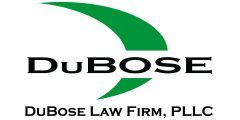The first case of a pedestrian killed by a self-driving car occurred in Tempe, Arizona. This technology is still in the experimental phase, however Uber self-driving cars are on the roads in Pittsburgh, San Francisco, and Toronto – as well as Tempe.
Are self-driving cars safer?
Increased safety was the initial premise for the existence of unmanned self-driving cars. One of the primary causes of automobile accidents is distracted driving. In a robotic car, that should not be a problem, but obviously there are issues to be addressed. Building systems to automatically react appropriately in unexpected situations is a difficult task.
What happened in Tempe?
In this case, the car did have a human in the car as a backup. It appears the car, a Volvo XC90, was going about 40 MPH on dry streets with clear weather at 10 p.m. on a Sunday. An investigation is ongoing since the safety driver did not appear impaired. The victim, a 49 year-old woman, was walking her bicycle in the street. Though this was the first accident involving a pedestrian, one of these autonomous vehicles collided with another car in March of 2017.
Safety measures in place
Because states are eager to encourage testing, there are few regulations in place – not only with Uber, but Waymo, Lyft and Cruise, owned by General Motors. Doug Ducey, governor of Arizona, said in 2017, “We needed our message to Uber, Lyft and other entrepreneurs in Silicon Valley to be that Arizona was open to new ideas.” Originally Arizona mandated a backup driver in the car, but recently that was changed to allow testing of unmanned self-driving cars. This leniency is to boost the economy by allowing a low regulatory environment.
California is on the cusp of allowing unmanned vehicles, but is still investigating the proposition. In its testing of manned self-driving cars, Waymo has produced statistics required by California. When a human has to take control, it’s called a disengagement. In just over a year, Waymo’s cars drove 350,000 miles with 63 disengagements. This averages approximately 5,600 miles between disengagement events, clearly demonstrating the need for more testing before widespread use of unmanned vehicles.
Michael Bennett, an associate research professor at Arizona State University, has been studying the reaction of the public to driverless cars and their artificial intelligence. His comment on the aftermath of the Tempe pedestrian incident reveal his conclusion, “We’ve imagined an event like this as a huge inflection point for the technology and the companies advocating for it. They’re going to have to do a lot to prove that the technology is safe.”
Who’s Fault is Injury from Self-Driving Car?
“Look for insurance companies to lobby for profound changes in state insurance requirements and state laws”, says Dallas lawyer, Ben DuBose. “However, in the Arizona Uber incident, there was a back-up driver in the car. So, there’s still a question of why the back-up driver didn’t disengage and potential liability for her. People will still need car auto insurance and will still have potential liability.”
At the same time, as we head into the self-driving car era, DuBose says to look for additional new legal theories to address the autonomous car features. Automobile manufacturers and software designers will face new product liability claims. As even Volvo Car Corp. Vice President, Anders Karrberg recently testified before Congress “[c]armakers should take liability for any system in the car. So we have declared that if there is a malfunction to the [autonomous driving] system when operating autonomously, we would take the product liability.”
